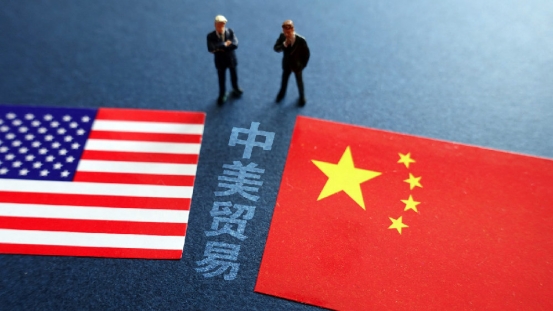China and the United States issued a joint statement on economic and trade and Trump's policy shock wave: the gold market suffered a double suppression
- 2025年5月13日
- Posted by: Macro Global Markets
- Category: News


On May 12, local time, China and the United States issued the "China-US Joint Statement on Economic and Trade Relations" in Geneva, Switzerland, marking substantial progress in the tariff game that has lasted for two years. According to the statement, the United States will reduce tariffs on China in stages. The first batch of adjustments will involve agricultural products, medical equipment and other fields, with tariff reductions of 30%-50%. However, tariffs on core technology products such as transistors and new energy vehicles will remain high. The two sides agreed to establish a regular consultation mechanism, led directly by Chinese Vice Premier He Lifeng and U.S. Treasury Secretary Jeffrey Bessant, to regularly engage in dialogue on sensitive issues such as intellectual property protection and rare earth export controls.
The key outcomes of the negotiations include:
Supply chain stabilization mechanism: The two sides will establish joint working groups in key areas such as transistors and new energy to alleviate the risk of industrial chain fragmentation caused by technological blockades. China pledged to expand imports of U.S. agricultural products, while the U.S. agreed to relax some export restrictions on medical equipment.
Tariff adjustment path: The United States will suspend the implementation of the 24% tariff in the executive order of April 2, 2025, and retain the remaining 10% tariff; China will simultaneously adjust its countermeasures against U.S. goods, and the overall tariff level of both sides will drop by about 40% from the peak.
Market access breakthrough: China will further open up its financial, education and other service industries, while the United States will allow Chinese companies to participate in the construction of some 5G infrastructure.
2. Trump's "king bomb" policy: the dual impact of the drug price executive order and the tariff game
Just as the dust settled on the China-US negotiations, Trump announced on May 12 that he had signed an executive order, declaring that he would "immediately reduce prescription drug prices by 30%-80%" and implement a "most-favored-nation policy," requiring that US drug prices be on par with the global lowest prices. This policy is seen by the outside world as a "political show" by Trump to divert domestic economic pressure, but it may cause severe fluctuations in the medical sector - the share prices of large US pharmaceutical companies fell by more than 3% before the market opened, while Chinese innovative drug companies may benefit from the rebalancing of global drug prices due to their cost advantages.
At the same time, Trump announced on social media that he would release the "most important announcement in history", and the market speculated that it might involve further adjustments to tariffs on China or new restrictions in the technology field. Analysts pointed out that the move is aimed at gaining bargaining chips for subsequent negotiations by creating new uncertainties, but it may also undermine the newly established market trust.
3. Intensified long-short game: Institutional differences and long-term support logic
Short-term negative factors dominate
The easing of Sino-US trade tensions directly weakened gold's safe-haven value. Coupled with the rebound of the US dollar index to above 101, the price of gold denominated in US dollars was suppressed. Orient Securities pointed out that the short-term easing of tariff issues caused gold to rise and then fall, and there was a strong need for technical overbought correction.

Global central banks have been net buyers of gold for the 16th consecutive year, with purchases expected to exceed 1,200 tons in 2025. China, India and Türkiye are the main buyers. Institutions such as Goldman Sachs and UBS believe that the delay in the Federal Reserve's interest rate cut expectations and the weakening of the U.S. dollar's credit are still long-term support factors for gold, and the target price by the end of the year is expected to be $3,700.
Geopolitical and policy risk warning
We need to be wary of the escalation of regional risks such as Trump’s policy fluctuations (such as tariff adjustments that fall short of expectations), the undercurrent of the Sino-US technology war (such as increased restrictions on chip exports), and the India-Pakistan conflict. If geopolitical risks resonate with hot spots in the Middle East and Eastern Europe, gold may see a retaliatory rebound.
The double impact of the breakthrough in Sino-US economic and trade negotiations and Trump’s drug price policy has caused the gold market to come under short-term pressure. Investors need to distinguish between short-term fluctuations and long-term trends. Short-term traders should strictly stop losses, and long-term holders can seize the opportunity of a pullback to make arrangements. In the coming week, the US CPI data will become a key guide for the market, and geopolitical and policy risks still need to be highly vigilant.
